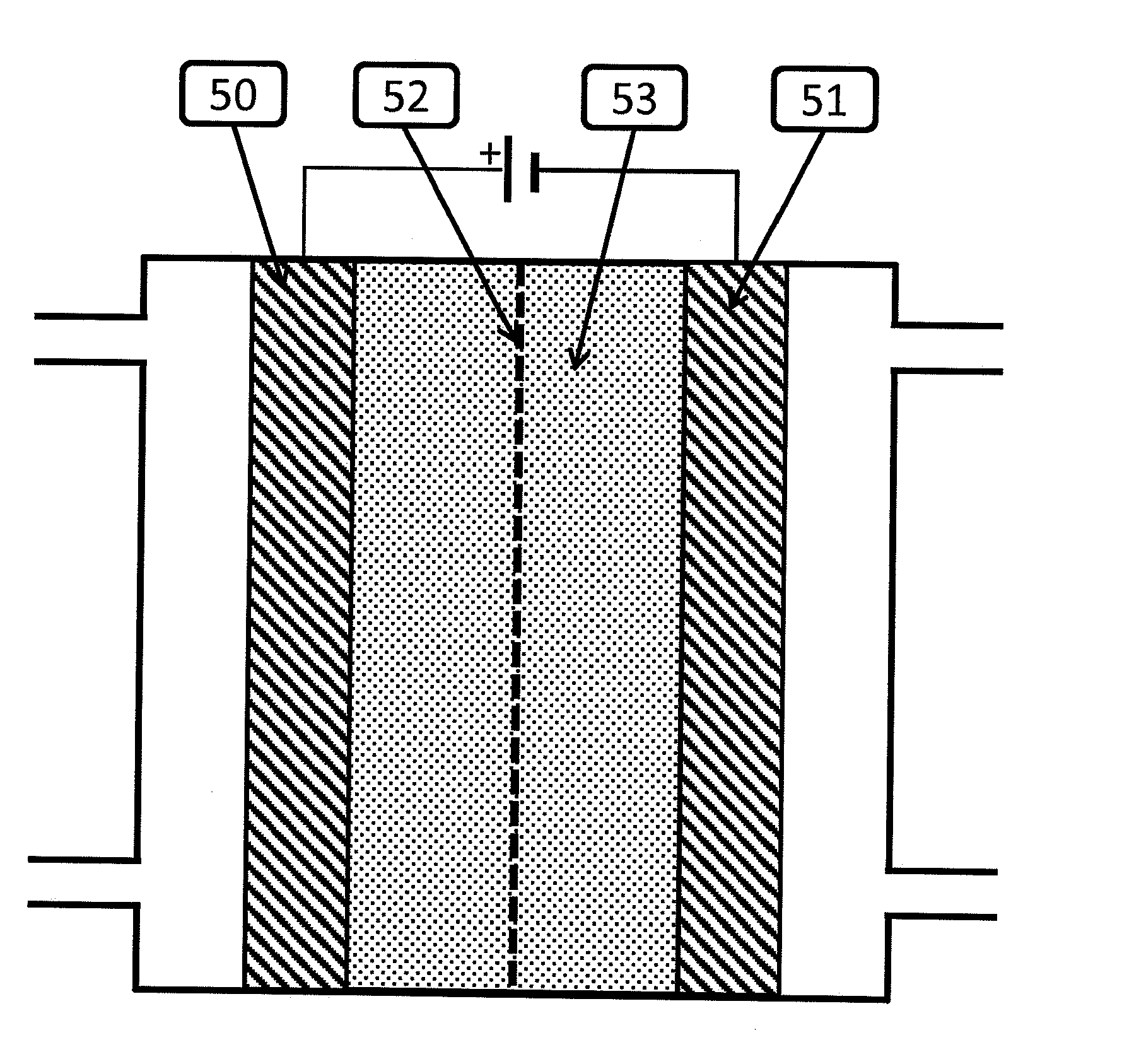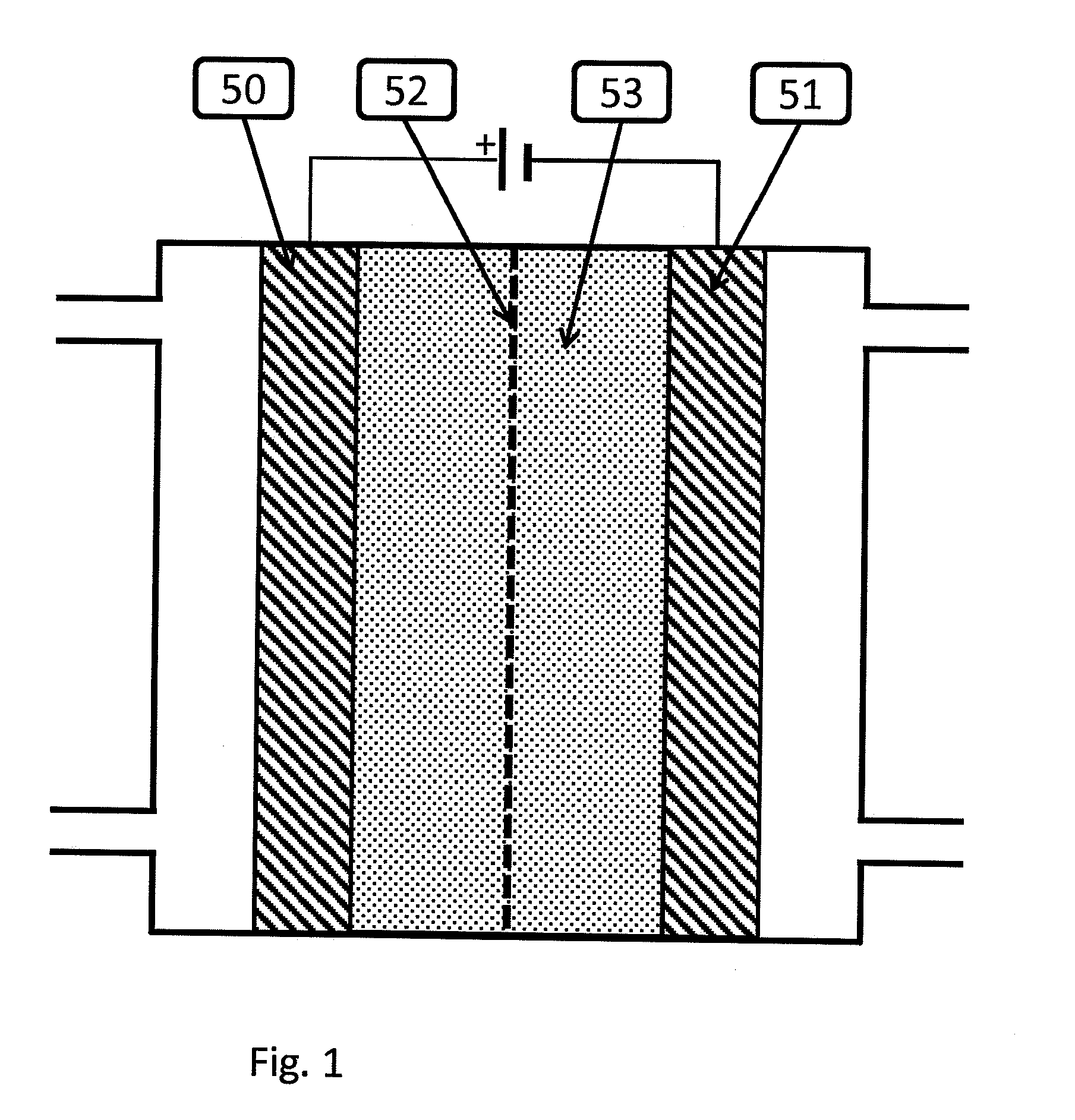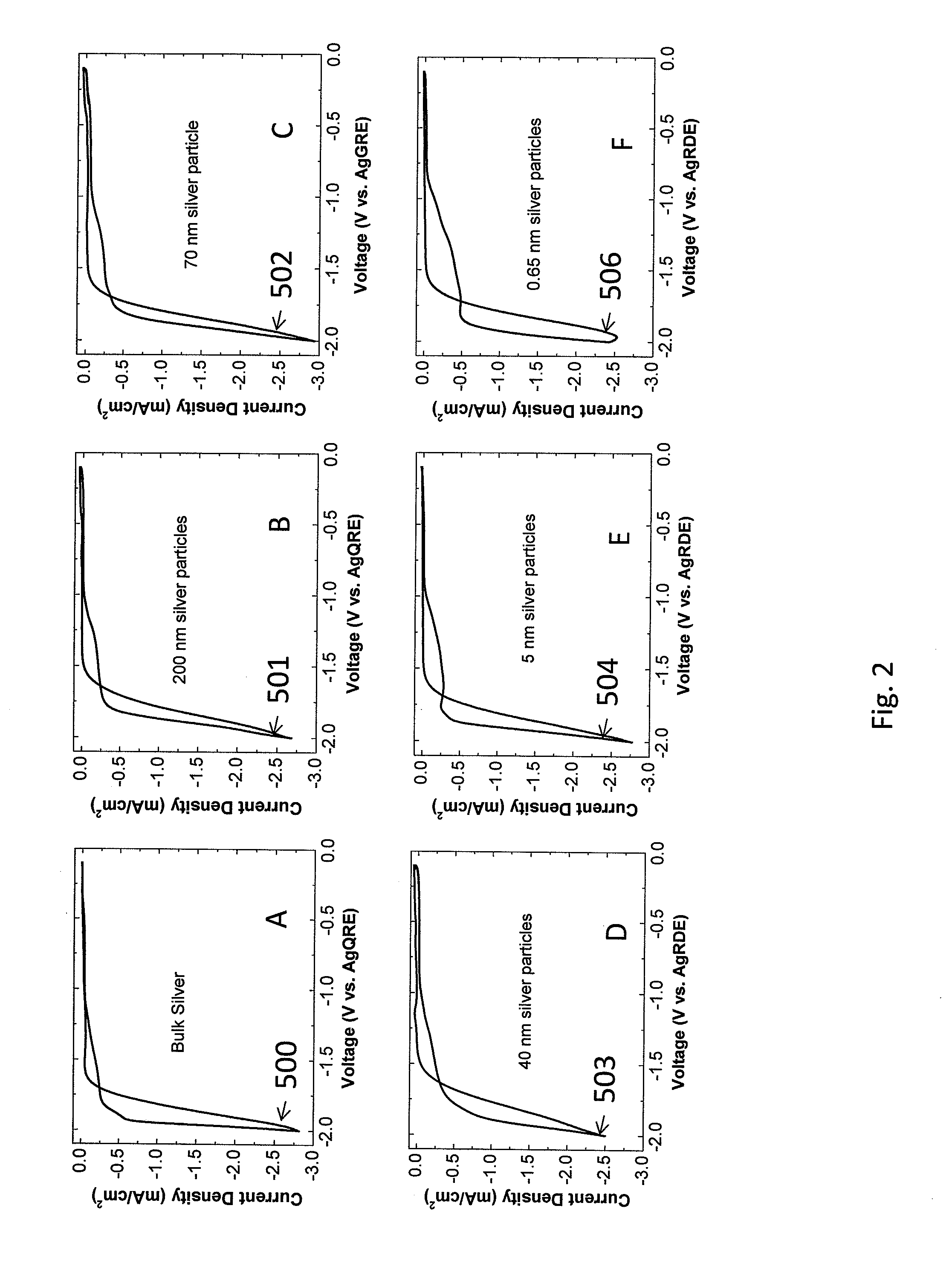Electrocatalysts For Carbon Dioxide Conversion
a technology of electrocatalysts and carbon dioxide, which is applied in the direction of physical/chemical process catalysts, cell components, separation processes, etc., can solve the problems of preventing efficient conversion of carbon dioxide into energy-bearing products, lack of catalysts with sufficient activity, overpotentials and high electron conversion efficiencies, etc., to achieve low rate, low electron conversion efficiencies, and low rate
- Summary
- Abstract
- Description
- Claims
- Application Information
AI Technical Summary
Benefits of technology
Problems solved by technology
Method used
Image
Examples
example 1
An Illustration of the Effects of Particle Size on CO2 Conversion on a Silver / EMIM Catalyst
[0073]Catalysts Tested
[0074]This example illustrates the effect of silver particle size on the rate of CO2 conversion on an EMIM-BF4 (Sigma Aldrich, St Louis Mo.) coated silver catalyst.
[0075]Experimental
[0076]During the experiments, a silver ink was deposited onto a silver rotating disk electrode (Pine Instruments, Grove City, Pa.). In the first experiment, the silver electrode was polished, and a CV was run as described in paragraph [0099][0102] below. Subsequent experiments were run by depositing one of i) 200 nm silver (Sigma Aldrich, St Louis, Mo.) ii) 100 nm silver (Sigma Aldrich, St Louis, Mo.) iii) 20-40 nm silver (Sigma Aldrich, St Louis, Mo.) yl) 5 nm (UT Dots, Champaign Ill.) v) 0.67 nm (Purest Colloids, Westampton, N.J.) onto the silver electrode and running the CV as in the fourth paragraph below.
[0077]In the case of 500-1000 nm, 100 nm, 20-40 nm silver a silver ink is prepared by...
PUM
| Property | Measurement | Unit |
|---|---|---|
| size | aaaaa | aaaaa |
| size | aaaaa | aaaaa |
| particle size | aaaaa | aaaaa |
Abstract
Description
Claims
Application Information
 Login to View More
Login to View More - R&D
- Intellectual Property
- Life Sciences
- Materials
- Tech Scout
- Unparalleled Data Quality
- Higher Quality Content
- 60% Fewer Hallucinations
Browse by: Latest US Patents, China's latest patents, Technical Efficacy Thesaurus, Application Domain, Technology Topic, Popular Technical Reports.
© 2025 PatSnap. All rights reserved.Legal|Privacy policy|Modern Slavery Act Transparency Statement|Sitemap|About US| Contact US: help@patsnap.com



